2016 Toyota Tundra Repair, Service & Tires
Get Started
Complete Auto Care for Your 2016 Toyota Tundra
-
TIRES FOR YOUR 2016 Toyota Tundra View Tire Info GET TIRE PRICING
-
REPAIR FOR YOUR 2016 Toyota Tundra View Repair Info SCHEDULE REPAIR
-
MAINTENANCE FOR YOUR 2016 Toyota Tundra View Maintenance Info SCHEDULE MAINTENANCE
-
OFFERS FOR YOUR 2016 Toyota Tundra Limited Time Tire Offers VIEW ALL COUPONS
2016 Toyota Tundra Tires
Recommended Tires | Tire Information
2016 Toyota Tundra Tires Sizes, Speed Ratings, and Inflation
Not sure about your 2016 Toyota Tundra tire size? Use the following chart to find information on tire size, speed rating, and inflation.
| Trim Level | Speed Rating | Inflation in PSI F/R | Tire Size |
|---|---|---|---|
| 2016 Toyota Tundra 1794 Edition | H | 30 PSI/33 PSI | P275/55R20 |
| 2016 Toyota Tundra TRD Pro | T | 30 PSI/33 PSI | P275/65R18 |
| 2016 Toyota Tundra SR5* | T | 30 PSI/33 PSI | P275/65R18 |
| 2016 Toyota Tundra SR5* | T | 30 PSI/33 PSI | P255/70R18 |
| 2016 Toyota Tundra Platinum | H | 30 PSI/33 PSI | P275/55R20 |
| 2016 Toyota Tundra Limited* | T | 30 PSI/33 PSI | P275/65R18 |
| 2016 Toyota Tundra Limited* | H | 30 PSI/33 PSI | P275/55R20 |
| 2016 Toyota Tundra SR | T | 30 PSI/33 PSI | P255/70R18 |
|
2016 Toyota Tundra 1794 Edition Speed Rating: H Inflation F/R: 30 PSI/33 PSI |
|
2016 Toyota Tundra TRD Pro Speed Rating: T Inflation F/R: 30 PSI/33 PSI |
|
2016 Toyota Tundra SR5* Speed Rating: T Inflation F/R: 30 PSI/33 PSI |
|
2016 Toyota Tundra SR5* Speed Rating: T Inflation F/R: 30 PSI/33 PSI |
|
2016 Toyota Tundra Platinum Speed Rating: H Inflation F/R: 30 PSI/33 PSI |
|
2016 Toyota Tundra Limited* Speed Rating: T Inflation F/R: 30 PSI/33 PSI |
|
2016 Toyota Tundra Limited* Speed Rating: H Inflation F/R: 30 PSI/33 PSI |
|
2016 Toyota Tundra SR Speed Rating: T Inflation F/R: 30 PSI/33 PSI |
* Note: these models have different tire sizes depending on vehicle options.
Recommended Tires for Your 2016 Toyota Tundra
What tires are best for a 2016 Toyota Tundra? Check out the following tire brands and types.
 ALENZA AS ULTRA
ALENZA AS ULTRA
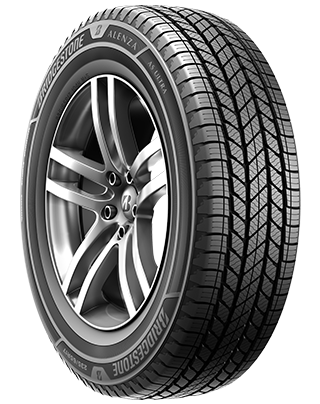
- No warranty
- All-Season
- Light Truck Tires
 Dueler A/T Revo 3
Dueler A/T Revo 3
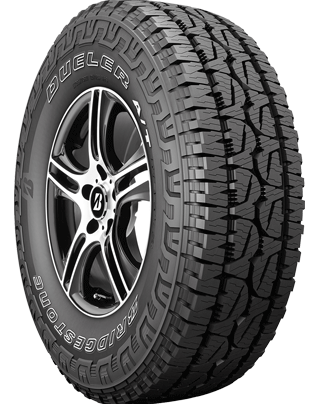
- Platinum Pact Limited Warranty
- All-Season
- Light Truck Tires
 Dueler A/T RH-S
Dueler A/T RH-S
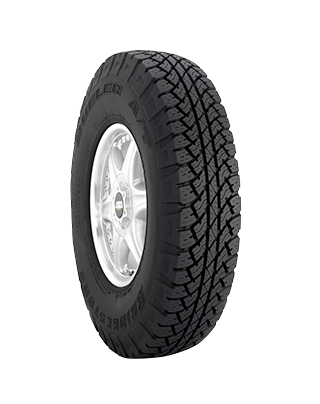
- Platinum Pact Limited Warranty
- All-Season
- Light Truck Tires
 Dueler H/T 684 II
Dueler H/T 684 II
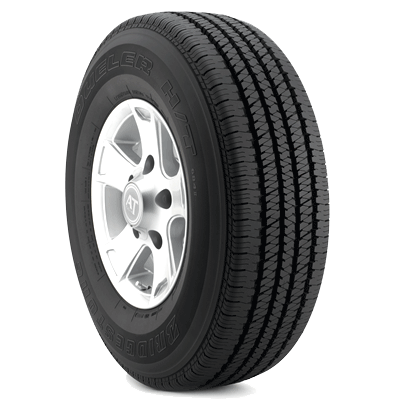
- Platinum Pact Limited Warranty
- All-Season
- Light Truck Tires
 Dueler H/T 685
Dueler H/T 685
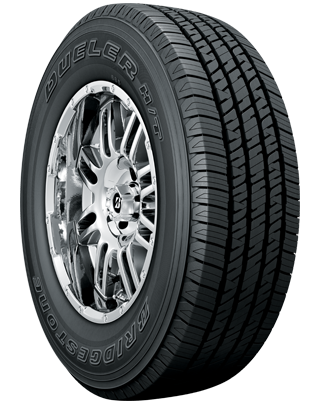
- No warranty
- All-Season
- Light Truck Tires
 Blizzak DM-V2
Blizzak DM-V2
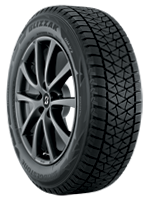
- No warranty
- Winter
- Winter
 DriveGuard Plus
DriveGuard Plus
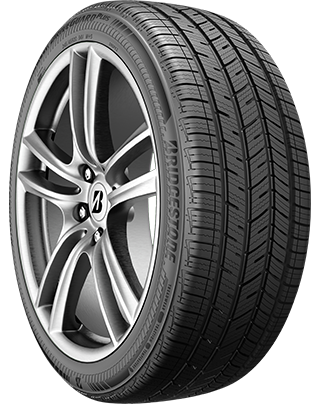
- Platinum Pact Limited Warranty
- All-Season
- Performance
 Dueler H/L Alenza
Dueler H/L Alenza
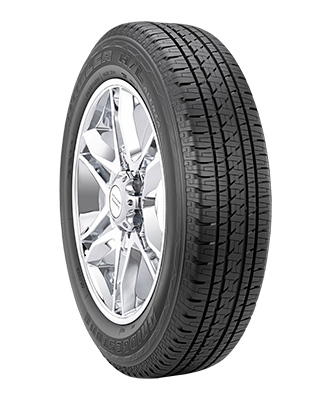
- Platinum Pact Limited Warranty
- All-Season
- Light Truck Tires
 Dueler H/L Alenza Plus
Dueler H/L Alenza Plus
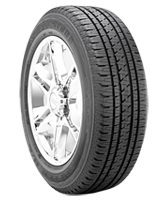
- Platinum Pact Limited Warranty
- All-Season
- Light Truck Tires
 WEATHERPEAK
WEATHERPEAK
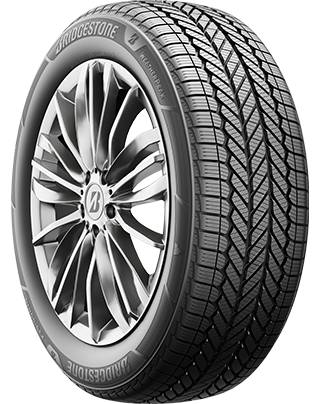
- Platinum Pact Limited Warranty
- All-Season
- Passenger Tires
 Destination LE3
Destination LE3
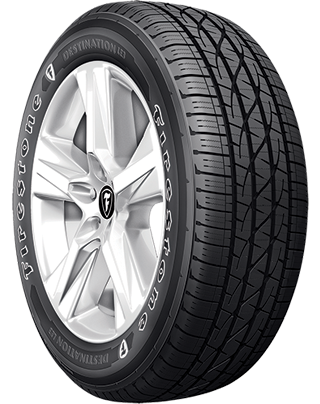
- No warranty
- All-Season
- Light Truck Tires
 Destination A/T2
Destination A/T2
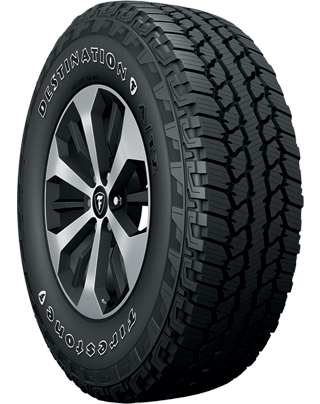
- Gold Pledge Limited Warranty
- All-Season
- Light Truck Tires
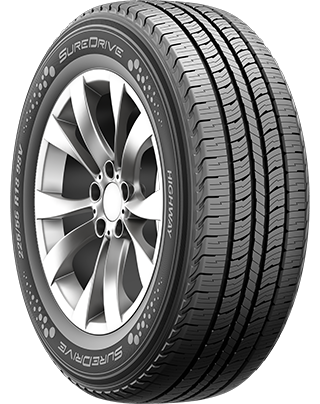
- No warranty
- All-Season
- Light Truck Tires
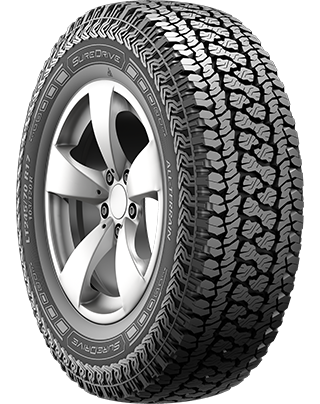
- No warranty
- All-Season
- Light Truck Tires
 PROXES ST III
PROXES ST III
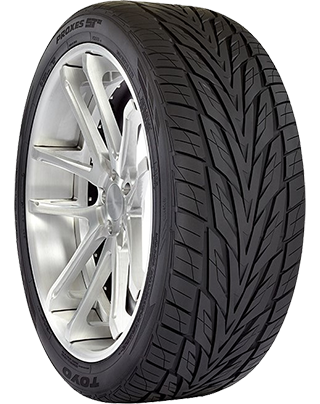
- No warranty
- All-Season
- Light Truck Tires
 OPEN COUNTRY R/T
OPEN COUNTRY R/T
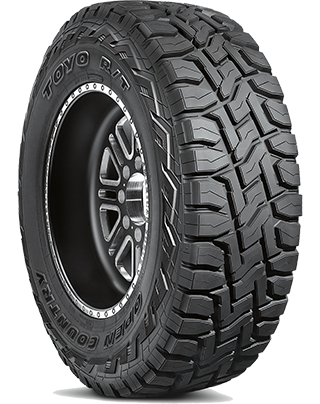
- No warranty
- All-Season
- Light Truck Tires
2016 Toyota Tundra Tire Information
Other than getting the proper tire size, there are a couple of other factors to consider when buying Toyota Tundra tires like how and where you drive, and how much you want to spend. When evaluating your driving conditions, think about where you live (countryside vs. city vs. mountains) and the kind of unexpected weather you're likely to experience. Drivers in states that fully experience all four seasons often buy two sets of tires: one for winter and one for summer. Other drivers buy one set of all-season tires instead. That way they don't have to return to the tire shop and their vehicle is always ready for sun, rain, and light snow!
Driving style is next on the list to think about when buying tires. If you're a diehard off-roader, you have very different tire needs than a highway commuter who doesn't leave the paved path. Browse Toyota Tundra tires online or come to your nearby Firestone Complete Auto Care for help selecting the tire that's right for you.
2016 Toyota Tundra Tire Installation & Rotation
We sell tires, but we also service them and care for all the around-the-wheel components. We're your tire shop and a complete service center for tire installation, maintenance, repair, rotation, and alignment! We make it easy to buy new 2016 Toyota Tundra tires online and book an installation appointment at the same time.
Questions About 2016 Toyota Tundra Tires
-
Is Toyota tire inflation important? A small decrease in tire pressure can have a big impact on your driving. Maintaining proper tire pressure can help improve braking time, increase fuel economy, and boost tire lifespan.
-
What do the tire sidewall numbers mean for my Toyota Tundra? The numbers on your tire sidewall give you information about tire speed rating, traction, treadwear, tire size, and load carrying capacity. Chat with a tire technician to learn how to read the numbers on your Toyota tires!
-
Can I check the tread depth on my Toyota tires at home? Stay on top of your tire tread depth to help avoid a dangerous drive. You can check tread depth with a penny. Hold the penny so that Abraham Lincoln is facing you, then place your penny into a tread groove upside down. If you can see the top of Abe’s head, your tread is shallow and it might be time for new Toyota Tundra tires. Grab a penny. Hold the so that Abe Lincon's head is facing you and his hair is pointing toward the ground. Then, place the penny into a tread groove. If you can see the top of Abe’s head, your tread is shallow and it might be time for new Toyota Tundra tires.
2016 Toyota Tundra Repair
When to repair, when to replace? Click on a repair below to learn more about Toyota Tundra repairs at Firestone Complete Auto Care.
2016 Toyota Tundra Repair Information
No driver looks forward to car repairs. We’re here to change that, though. At Firestone Complete Auto Care, we want to make car repair painless and hassle-free. When you come to us for 2016 Toyota Tundra repair services, our skilled repair technicians will get your Tundra back on the road. We’ll start by assessing what repairs may be needed, and we’ll provide you with a detailed explanation of what we recommend. We value your trust, so we recommend only the repairs we think are necessary for your safety on the road.
How Much Does Toyota Tundra Repair Cost?
The cost to repair your 2016 Toyota Tundra depends on what kind of repair you need, the cost of any replacement parts, the amount of labor necessary to get the job done, and your locale. No matter what state you’re in, be sure to look through our offers and online coupons for repairs.
A few different aspects can influence repair costs for your 2016 Toyota Tundra, like
2016 Toyota Tundra Auto Repair Questions
-
Can scheduled maintenance help me avoid repairs? One of the best ways to prevent 2016 Toyota Tundra repairs is by staying on top of your Toyota maintenance schedule. This schedule is written by the people who made your vehicle and they know best how to keep it running smoothly.
-
What's wrong if something feels 'off' in my Toyota? You know your vehicle. You also know when something feels 'off' with your vehicle. Pay attention when things don't run like they used to and stop by for a Courtesy Check when you notice an unusual sign, smell, or sensation. We might be able to help you prevent Toyota Tundra repairs!
-
Do I have to get the repairs you recommend for my Toyota? Trust is more than just a saying on the wall. It’s a window underneath it. That’s why we won’t recommend services or repairs for your 2016 Toyota Tundra unless we think they’re vital to your safety on the road.
2016 Toyota Tundra Brake Repair
Your Toyota Tundra may be powered by a strong engine. But if you can't stop it, then it's scrap metal. Don't wait if you're experiencing brake squeaks or a loss of braking power. Safe driving is difficult when your brakes are anything but their best. Plus, ignoring your brake problems can result in more damage and higher brake repair bills. Go to your local Firestone Complete Auto Care for 2016 Toyota Tundra brake repairs. Our brake repair services include brake pad/shoe removal and replacement, rotor/drum resurfacing, brake fluid exchange, and brake caliper and wheel cylinder installation.
Questions About Your Toyota Tundra Brakes
-
Why does my Tundra shake when I brake? If your Tundra shakes when you brake, you could be dealing with warped rotors, faulty brake calipers, worn brake pads or rotors, or loose or worn suspension parts. Schedule a free brake inspection at Firestone Complete Auto Care for help diagnosing your brake issue.
-
How often do I need to replace my Tundra brake pads? Brake pads generally last between 30,000 and 40,000 miles. Your driving can affect how long your Tundra brake pads last, though. For example, mainly driving on highways and gradually braking can help increase the lifespan of your brake pads, and carrying hefty loads or riding your brakes can shorten it.
-
Does brake fluid leak when the car is off? Because your Tundra brake system is a closed hydraulic system, it should not leak brake fluid. However, if components in your brake system have worn out or been damaged, it might cause brake fluid to leak.
When to Get Toyota Tundra Drivetrain Repairs
Drivetrains for front, rear, and all-wheel-drive and 4WD vehicles are quite different, so you don't want to go to just anyone for drivetrain repair. You want to visit Firestone Complete Auto Care. We can fix many 2016 Toyota Tundra drivetrain components Your Tundra might need driveshaft repair if you notice vibration as your vehicle accelerates, clunks when shifting, heavy vibrations in your floorboards, or resistance when turning.
2016 Toyota Tundra Drivetrain Questions
-
How do I know if my Toyota drivetrain is damaged? Hear noises toward the back of your Toyota Tundra? See fluid leaking? Having issues turning? These could all be signs of drivetrain damage you don't want to ignore. Take action quickly to catch repairs or replacements before something more severe happens.
-
What causes a Tundra’s malfunction indicator light (MIL) to illuminate? A multitude of problems can activate your Tundra’s malfunction indicator light (better known as the check engine light), including issues with the engine, transmission, sensors, electrical system, or connectors.
-
How concerning is a drivetrain malfunction in my Tundra? If your Tundra has a drivetrain malfunction, don't wait. Get it checked out by a professional mechanic. Identifying the underlying cause and performing the appropriate repairs right away can help prevent further damage and avoid unsafe driving conditions.
2016 Toyota Tundra Wheel Alignment
Alignment services involve precise adjustments to your Toyota Tundra’s suspension system, which serves to attach your wheels to your vehicle. When your car has an alignment service, your tire angles are adjusted according to measurements recommended by Toyota. Why? So that your tires can make contact with the road at the best possible angle. Before we adjust the alignment of your 2016 Toyota Tundra, we’ll start by checking the current alignment angles. Then, we’ll adjust the angles as needed until they match recommended measurements from Toyota.
Answers to Toyota Tundra Alignment Questions
-
How can I avoid knocking my Toyota Tundra out of alignment? Hitting a pothole or curb can alter your wheel alignment. So can general wear and tear over time.
-
How frequently should you get a wheel alignment for your Tundra? Typically, your alignment should be checked every 6,000 miles or 6 months, whichever comes first. Double-check your Tundra owner’s manual for Toyota's exact recommended schedule.
-
Do you need to get your Tundra wheels aligned? While you don’t necessarily need to get an alignment when putting new tires on your Tundra, it’s still a good idea. Ensuring your wheels are properly aligned can help support optimal handling, tire wear, and fuel efficiency.
2016 Toyota Tundra Engine Services
If your 2016 Tundra engine needs repairs, our technicians will make sure you understand what’s going on before they start working on your engine. We never do any work without your sign-off. If a repair isn’t urgent right now, we’ll let you know. If it's necessary for your safety, we'll make sure you understand that, too. We want to give you all the details you need to make an informed decision about your engine repairs. Turn to Firestone Complete Auto Care for your 2016 Tundra engine repairs and you can feel good knowing that we only use Toyota-compliant replacement parts such as the serpentine belt, motor oil seal, fuses, or another part.
2016 Toyota Tundra Engine Q&A
-
Why does the check engine light in my Tundra turn on when I start my car? It's okay if your check engine light comes on when you first start your vehicle. This is a sign that your vehicle is testing its circuits. The light should go off shortly. Bring your vehicle in if it doesn't.
-
Are Toyota Tundra engine noises bad? Strange engine sounds can be a sign something’s off in your Toyota Tundra. Knocking or tapping could be a symptom of low oil. A high-pitched whistle could signal an intake leak or misaligned belt. Squealing can be traced back to a loose fan belt, and grinding might be a sign of brake problems rather than engine issues.
-
What could damage a Toyota engine? Certain driving habits can damage your engine and should be avoided. These habits include 'running on fumes,' revving the engine while still in Park, or pushing 'the pedal to the metal' before the engine has warmed up. Help sustain your engine’s performance and efficiency by staying miles away from these bad driving practices.
Get Your Toyota Tundra Tire Repaired
If your 2016 Toyota Tundra is in need of a tire inspection or possible flat tire repair, Firestone Complete Auto Care has your back. In some cases, a tire doesn’t have to be replaced – it can be plugged and patched with a simple repair. Depending on the damage, though, a repair might not be the right move. Our technicians can determine which option is best for your situation. We’ll begin by taking a look at where the damage is, the type and extent of the tire damage, and how all of your tires are wearing.
If we determine that your 2016 Toyota Tundra tire can be safely repaired, the repair process is actually fairly simple: (1) Take the tire off the wheel for easy inspection, (2) use a filler to close up the puncture (this is to keep moisture from getting in), and (3) seal the inner liner with a repair unit to prevent air loss.
Your Questions About Toyota Tundra Tire Repair, Answered
-
Can I drive my Toyota on a flat tire? Driving on a flat or underinflated tire can put extra stress on your wheels and alignment. While it’s sometimes necessary to drive a short distance on a flat tire to get to a safe place, don’t take any other trips in your Tundra until you can have the flat tire repaired or replaced.
-
Can I use an emergency/temporary sealant to fix my Toyota's flat tire? Temporary sealants will solve your problem… for a little bit. If you’ve seen temporary or emergency tire sealant before (it usually comes in a can), it can be tempting to turn to this as a solution for your flat tire. Keep in mind that these fixes could buy you some time to get to Firestone Complete Auto Care for a proper repair, but they could also cause some harm in the process (for example, damage to your TPMS). Plus, using a product like this could void your tire warranty.
-
What can cause Tundra tires to keep losing air? Possible reasons for your Tundra tires continuously losing air include a leaking valve steam, wheel damage, and a puncture or hole in the rubber.
2016 Toyota Tundra Maintenance
When it comes to your Toyota Tundra, how you treat your car makes all the difference in its performance. With proactive maintenance, your Tundra could be on the road well past the 200,000 mile mark.
2016 Toyota Tundra Maintenance Schedule
What is the manufacturer recommended maintenance schedule for a 2016 Toyota Tundra? Find maintenance info for your vehicle.
Guide to 2016 Toyota Tundra Scheduled Maintenance
Instead of waiting for an issue to arise with your Tundra, you can stay ahead of problems before they even begin. Rely on the recommended maintenance schedule that’s been created just for your 2016 Toyota Tundra! The recommended maintenance schedule is put together by Toyota, your vehicle manufacturer. Driving conditions, climate variations, and other variables can affect which scheduled maintenance services you’ll need; in most cases, though, recommended maintenance will consist of services like fluid exchanges, filter changes, new brake pads, oil changes, and tire rotations. Staying on track with routine service appointments can help your Tundra perform better, keep you safer on the road, and prevent common 2016 Toyota Tundra problems.
Learn About Vital Maintenance Needs for Your Toyota Tundra
Head to your nearest Firestone Complete Auto Care in your 2016 Toyota Tundra for factory-recommended routine maintenance and a skilled technician will start the appointment with a Courtesy Check. The Courtesy Check helps us see what we’re working with under the hood, and allows us to alert you to any potential problems before they worsen. During a Courtesy Check, we’ll always check your battery, then we’ll move on to inspect your Tundra’s head and tail lights, tires, fluid levels, alignment, and windshield wipers.
Firestone Complete Auto Care is the place to go for 2016 Toyota Tundra maintenance. We can help you keep your vehicle (and your life!) running smoothly. Many of our locations have weekend and evening hours for your convenience.
2016 Toyota Tundra Maintenance Questions
-
When should I have Toyota Tundra alignment checked? Watch out for pothole damage. If your 2016 Tundra is pulling to one side or the other, your tires or suspension system could be calling out for help.
-
When should I use high mileage oil in my Toyota Tundra? Got 75,000+ miles on the odometer? Consider high mileage motor oil. High mileage oil is formulated to address the specific problems encountered by high mileage vehicles, or those with more than 75,000 miles. It can help reduce oil consumption, smoke, and emissions from older Toyota Tundra engines.
-
Can I ignore dashboard lights on my Toyota? It's better to get them addressed as soon as possible. An illuminated dashboard light means something in your vehicle isn't functioning like it should. Letting problems linger can mean bad news for your Toyota Tundra, so be sure to take your car in for service as soon as you notice an illuminated dashboard light.
The Right Battery Size for a 2016 Toyota Tundra
Researching battery replacements for your Toyota Tundra?
| Battery | Engine | Warranty | Cold Cranking Amps | |
|---|---|---|---|---|
| 24F-3 | V8/5.7L | Replacement 24 months | Performance months | 650 |
| 35-2 | V8/5.7L | Replacement 36 months | Performance months | 640 |
| 24F-RP | V8/5.7L | Replacement 48 months | Performance months | 750 |
| 24F-3 | V8/4.6L | Replacement 24 months | Performance months | 650 |
| 35-2 | V8/4.6L | Replacement 36 months | Performance months | 640 |
| 24F-RP | V8/4.6L | Replacement 48 months | Performance months | 750 |
2016 Toyota Tundra Batteries
The average car battery lasts three to five years. Check your battery regularly and replace it as needed so it doesn’t leave you and your Toyota Tundra stranded. Watch for signs that your current battery is getting too old or too weak. A sluggish engine start, an illuminated battery or check engine light, bloated battery case, corroded battery terminals, and subpar electrical performance can all signal that your battery is on its last leg.
You can also get a Free Battery Test at your local Firestone Complete Auto Care. Visit us for a complimentary battery check and, if necessary, a battery replacement to help keep your 2016 Toyota Tundra running! Car batteries are only one of our many strong suits. Our technicians are familiar with Toyota-specific recommendations for Tundra battery CCAs and reserve capacity. Get help identifying the type and size of battery that's best for your Tundra, and schedule an appointment today for a quick car battery replacement.
Answers to Your Toyota Tundra Car Battery Questions
-
Why doesn’t my Toyota Tundra battery stay charged? A car battery that needs to be jump-started every time is as good as dead. It may be getting old. Or, you’ve been leaving the doors slightly open and the dome lights on during the night. Stop in for a free battery check at your nearest Firestone Complete Auto Care and learn more about your battery's charge.
-
How long can I expect my car battery to last? A car battery normally lasts three to five years, but this number can vary based on battery type, your driving habits, and battery maintenance.
-
What is the white, crusty stuff around my Tundra’s battery post? If you notice white, crusty stuff around the battery terminals of your Tundra, it's likely corrosion. A chemical reaction between battery acid and the air can create a white, powdery substance that builds up over time on the terminals. This buildup can interfere with the electrical connection between the battery and your Tundra’s electrical system, potentially leading to poor performance, difficulty starting, and other issues.
2016 Toyota Tundra Oil Change Service
Toyota recommends having your 2016 Toyota Tundra’s motor oil changed at regular intervals. Outside of Toyota-recommended oil change intervals, your Tundra may need an oil change if your check engine light is on, you hear knock knock knock coming from the engine, smell oil inside the car, or notice an unusual amount of exhaust. You may also need an oil change more frequently than Toyota recommends if you haul heavy loads, frequent dusty roads, enjoy off-roading, or go long distances at low speeds.
Whether it’s synthetic, conventional, or a blend of both — your local Firestone Complete Auto Care has the right oil for your Toyota Tundra. Check your owner's manual and talk with a technician to select the right Toyota Tundra oil, whether it's Quaker State® Advanced Durability™ conventional oil, Pennzoil® High Mileage Vehicle® motor oil, Pennzoil Platinum® Full Synthetic motor oil with PurePlus™ Technology, or Shell Rotella® heavy-duty engine oil. In an oil change service, a technician will change your Tundra's oil, replace and recycle your used oil and filter, check all of your other filters, top-off essential fluids, and perform a courtesy inspection on your entire vehicle. Make an appointment for an oil change service today and let the oil experts take care of your Tundra's engine.
2016 Toyota Tundra Oil Change Questions
-
What can cause the oil light on my Toyota Tundra to illuminate? The oil change light in your Toyota Tundra could be triggered by an overdue oil change. However, if the oil pressure light is on, you may be dealing with low engine oil, a failing oil pump, a clogged oil filter, or a malfunctioning oil pressure sensor.
-
Can I change my Toyota Tundra oil at home? Changing engine oil at home isn’t as simple as it’s made out to be. You’ll have to figure out how to properly dispose of the oil and buy special tools. Having your oil changed professionally can not only reduce the risk of something going wrong during the service, but it’ll also help your car perform smoothly down the road.
-
Why is my Toyota Tundra exhaust smoke grayish or blue? Your engine could be burning oil due to a leak. It may be time for a pro to take a look. A leak can be caused by a variety of issues including faulty valve seals, blown piston rings, or damaged cylinder walls.
2016 Toyota Tundra Engine Tune-Ups & Maintenance
Regular engine tune-ups can optimize your Tundra’s power on the road. Your nearest Firestone Complete Auto Care location has several options to choose from when it comes to Toyota Tundra engine tune-up services. The first is the standard Firestone Tune-Up. The standard Firestone Tune-Up includes new spark plugs (and installation!), a thorough inspection of engine components, and a lifetime parts warranty*. Another service option pays special attention to the filters in your Tundra. Specifically, we replace the fuel filter and air filter. The third tune-up option is a fuel system cleaning service, which is a three-step process that removes varnish, dirt, and carbon deposits on your Tundra's fuel injectors, throttle body, and throttle plate. This goes a long way in boosting your fuel system’s overall performance. Keep in mind that your Tundra's mileage and maintenance history can uniquely impact its tune-up needs. Ask one of our technicians what your vehicle needs, based on your driving habits and your car’s current condition.
*Check with a teammate at Firestone Complete Auto Care for complete terms and conditions regarding warranties.
Common Engine Tune-Up Q&A for 2016 Toyota Tundra
-
Will it hurt my Toyota Tundra to drive with old spark plugs? Replace spark plugs on time or about every 30,000 miles or so. Without the spark of electricity created by spark plugs, your engine doesn’t have the combustion it needs to start — which could leave you stranded on the road. Always replace your spark plugs on time based on Toyota’s recommendations.
-
What does a puddle underneath my Toyota Tundra mean? Puddles could indicate that your vehicle is leaking coolant, oil, or brake fluid. Ignoring these leaks can lead to permanent engine damage, so address these symptoms ASAP with a tune-up service.
-
How often do Toyota Tundra fuel injectors need to be cleaned? The frequency at which car fuel injectors should be cleaned can vary depending on several factors, including the type of fuel used and the driving conditions. Some manufacturers generally recommend a fuel system cleaning as part of your general car maintenance, or as needed based on symptoms of poor fuel system performance.
Suspension Service & Repair for 2016 Toyota Tundra
During the first few years you had your 2016 Toyota Tundra, the ride was probably so smooth that you didn’t even think about it! But these days, things are starting to feel a bit rough. Perhaps your Tundra feels bouncy, drifts to one side, or makes a weird sound when you drive over a speed bump or turn. The first sign of trouble is the best time to bring your 2016 Toyota Tundra in for suspension and steering service. We’ll get to the root of the issue and, if your car needs steering and suspension repairs, we’ll go over the services you need and how much they will cost before we do any work.
2016 Tundra Steering & Suspension Q&A
-
Why is my Toyota Tundra bouncing excessively? Damaged struts or shocks can't dampen road bumps properly, causing your vehicle to feel like a trampoline after each dip or bump.
-
Why does my Tundra tilt forward when I hit the brakes? The forward dip in the front end of your Tundra when you brake is caused by the weight and momentum transferring to the front wheels. If your suspension system is in bad shape, it can fail to distribute this force, leading your front end to dip further downward.
-
What role do tire pressure and tread depth play in my Toyota's suspension? Proper tire care can reduce strain on the suspension system, and also alert you to the need for new tires. Uneven tire wear is one sign of steering and suspension system problems, but it can also contribute to more.
Convenient & Local 2016 Toyota Tundra A/C Service
Technicians at Firestone Complete Auto Care are ready to help you address your 2016 Toyota Tundra A/C problems. During an A/C performance check, we'll determine the condition of your 2016 Toyota Tundra A/C system to see if repair work is required. We’ll test overall system performance, check for any leaks, and measure the system pressure.
While your 2016 Toyota Tundra’s air conditioner is being serviced, we’ll also do an A/C evacuation and recharge. During this process, a technician will remove the old refrigerant from the A/C system. Then, they’ll perform an evacuation (also known as a discharge) on the entire system per Toyota guidelines. Finally, we’ll recharge the A/C system with new refrigerant.
2016 Toyota Tundra A/C System FAQs
-
Why is my Tundra A/C blowing hot air? An A/C blowing hot air has several possible root causes. There could be an issue with your compressor clutch, a blown fuse, a leak, or a clog in the expansion valve.
-
What causes A/C system leaks? To put it simply, age and moisture are some of the main causes of leaks in your A/C. Over time, rubber gaskets and seals can wear out, which pushes much-needed refrigerant out of your Tundra’s A/C system — and lets outside moisture get in, which can take a toll on internal A/C components.
-
Why does my vehicle have to be moving for my Tundra’s A/C to work? Damaged or worn components in your Tundra’s electrical or air conditioning system can cause the A/C to only work when the car is moving. You may be dealing with low coolant or a faulty cooling fan.
2016 Toyota Tundra Transmission Service
Your transmission carries power from the engine to the wheels so that you can drive at the speed you desire. Because your transmission is responsible for converting the right amount of power into the right amount of speed, even the smallest transmission problems should be addressed right away. 2016 Toyota Tundra transmission problems can show up as shifting delays, jumping or grinding during acceleration, the car shaking at any speed, or whistling noises and a burning smell coming from under the hood. Let Toyota Tundra transmission problems linger and your could suffer a loss in fuel efficiency or find that your Tundra isn’t working at all. Our technicians know how to service your 2016 Tundra up to Toyota-recommended standards. As soon as you suspect something’s wrong with your Tundra’s transmission, book an appointment at your local Firestone Complete Auto Care to help keep your engine running at peak performance.
2016 Toyota Tundra Transmission Q&A
-
When should I have my Tundra's transmission fluid checked or exchanged? Maintaining your Toyota Tundra transmission fluid is one of the best ways to maintain your transmission's health. A general rule of thumb is to have your transmission fluid checked and changed about every 30,000 to 60,000 miles, but that timeline can change if you're hard on your Toyota. Leaks or low transmission fluid are easy to spot and affordable to repair.
-
Can my Toyota Tundra leak transmission fluid? Yes. Toyota Tundra transmission fluid can leak as time passes, which may lead to transmission problems. Transmission fluid leaks are often caused by worn or damaged transmission components, such as the transmission pan, cooler lines, seals, or housing. An overfilled transmission may also be behind your transmission fluid leak.
-
Should I avoid driving my Toyota Tundra if there is a transmission fluid leak? You should avoid driving with a transmission fluid leak. Your transmission system relies on transmission fluid to operate properly, and a leak may decrease performance, cause your Tundra to overheat, or even lead to transmission failure.
2016 Toyota Tundra Inspections
When you bring your vehicle to Firestone Complete Auto Care for any service, we’ll automatically do a multi-point Courtesy Check. The technician will begin by testing your Toyota Tundra's battery to determine how much charge remains. After we’ve inspected your Toyota Tundra’s battery, we’ll visually inspect your filters, lights, wiper blades, alignment, tires, hoses, belts and fluid levels.
We perform a Courtesy Check any time you bring your car to a local Firestone Complete Auto Care for service, but we can also dig deeper and perform a Complete Vehicle Inspection on your 2016 Toyota Tundra if you prefer. During a Complete Vehicle Inspection, we’ll visually check everything that’s on the list for a Courtesy Check. Additionally, we’ll perform an examination (by hand!) of your steering and suspension system, brakes, and exhaust components. The goal of this type of inspection is to unearth significant issues that might wreak havoc on your 2016 Toyota Tundra if left unaddressed.
Depending on where you live, you may be able to complete your vehicle’s safety tests or state inspection at your nearest Firestone Complete Auto Care. Inspections are performed on a state-by-state basis and requirements vary.
FAQs for 2016 Toyota Tundra Vehicle Inspections
-
How do I know if my Toyota Tundra needs a check-up? If you’ve noticed something that doesn’t feel quite right in your car lately, a Courtesy Check could give you peace of mind. We can help you get to the bottom of strange engine noises, a jerky steering wheel, or an engine that's hard to start.
-
Can you fix my 2016 Toyota Tundra so it will pass a state inspection test? Don’t panic! Come in for a complete inspection today and we’ll find (and repair) the root cause before you have your vehicle retested.
-
When is the best time to get a complete vehicle inspection for my Toyota Tundra? It’s generally a good idea to get a complete vehicle inspection for your Toyota Tundra before a road trip and/or when something strange occurs and you are unable to find the cause. Signs something is up include dashboard lights illuminating, odd noises coming from the engine, and your steering feeling loose or tight.
Radiator Service & Repair for 2016 Toyota Tundra
Keeping up with regular radiator maintenance in your 2016 Toyota Tundra is crucial to keep your engine in the best possible shape for years to come. Toyota recommends that you replace coolant (also called antifreeze) at certain intervals, but it’s a good idea to keep your eyes open for any indication that your radiator is failing. You could be on the verge of a radiator-induced engine breakdown if you notice leaking coolant, overheating, or an illuminated low coolant dashboard light.
At Firestone Complete Auto Care, we start by performing a thorough inspection of your Toyota Tundra cooling system. Then, we’ll move on to a machine-powered coolant exchange. Finally, we’ll refill the flushed sealants, lubricants and chemicals, then do a pressure check to catch any possible leaks. If you’re about to lose your cool over a too-hot engine, rest assured that we’re here to give your 2016 Toyota Tundra the top-notch service it needs.
Common Toyota Tundra Radiator Questions
-
What does the coolant light on my Toyota dashboard mean? Your engine might be about to overheat. If your low coolant light is on, pull over in a safe area and wait for your engine temperature to go down. Once it’s safe to do so, bring your car to your nearest Firestone Complete Auto Care to have the coolant system inspected.
-
What is causing my Tundra to overheat? One of the main reasons your Toyota Tundra engine might overheat is because you don’t have enough coolant. Other causes include a clogged radiator, a damaged cooling fan, a malfunctioning thermostat, or a faulty water pump.
-
My Tundra radiator sounds like it's rumbling or boiling! What's up? If your radiator sounds like it's boiling or rumbling, you could have air pockets in the cooling system of your Tundra. You might also have a damaged radiator cap (super easy to fix!) or a clogged radiator.